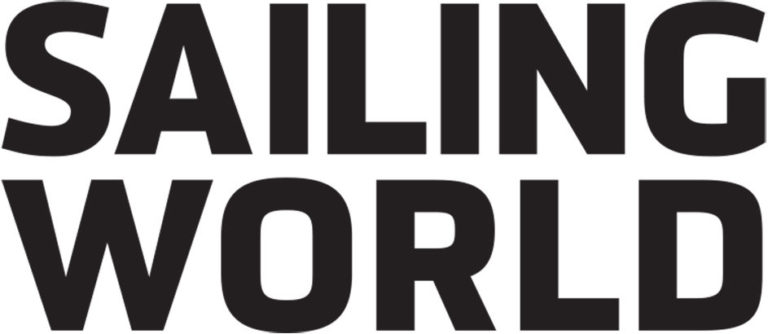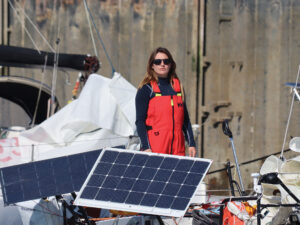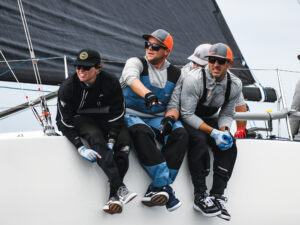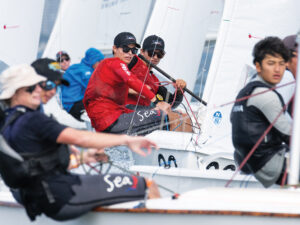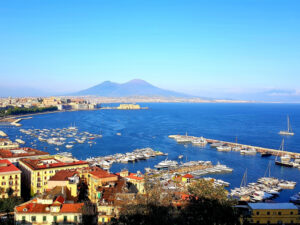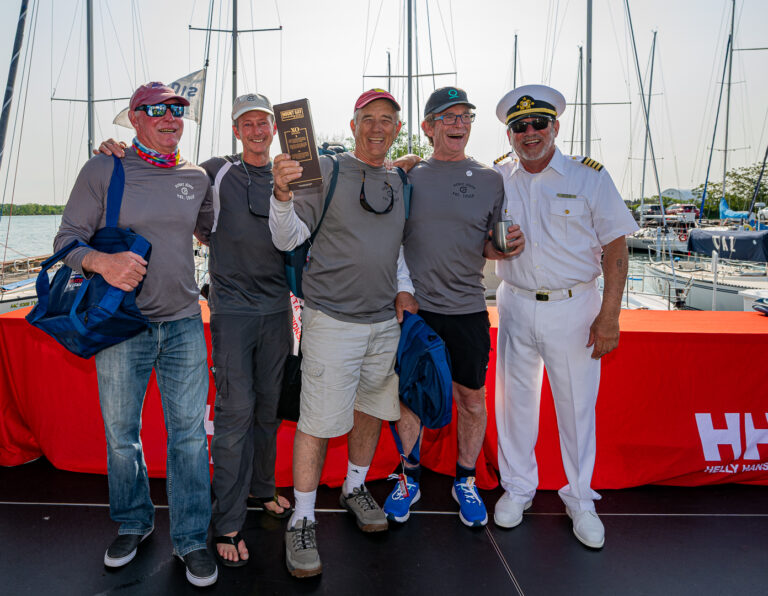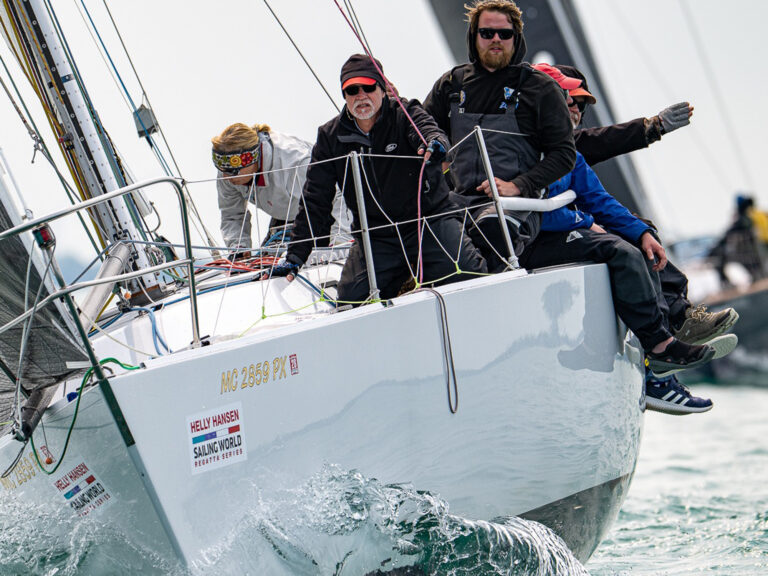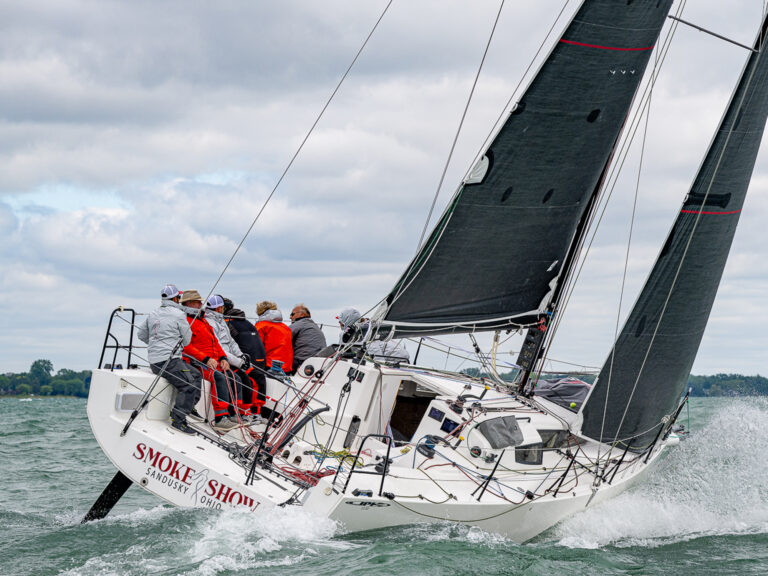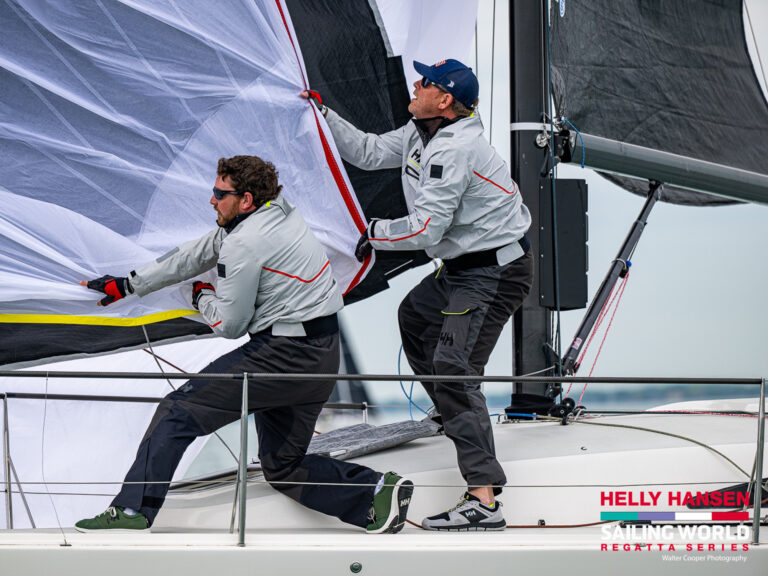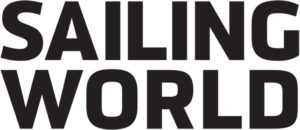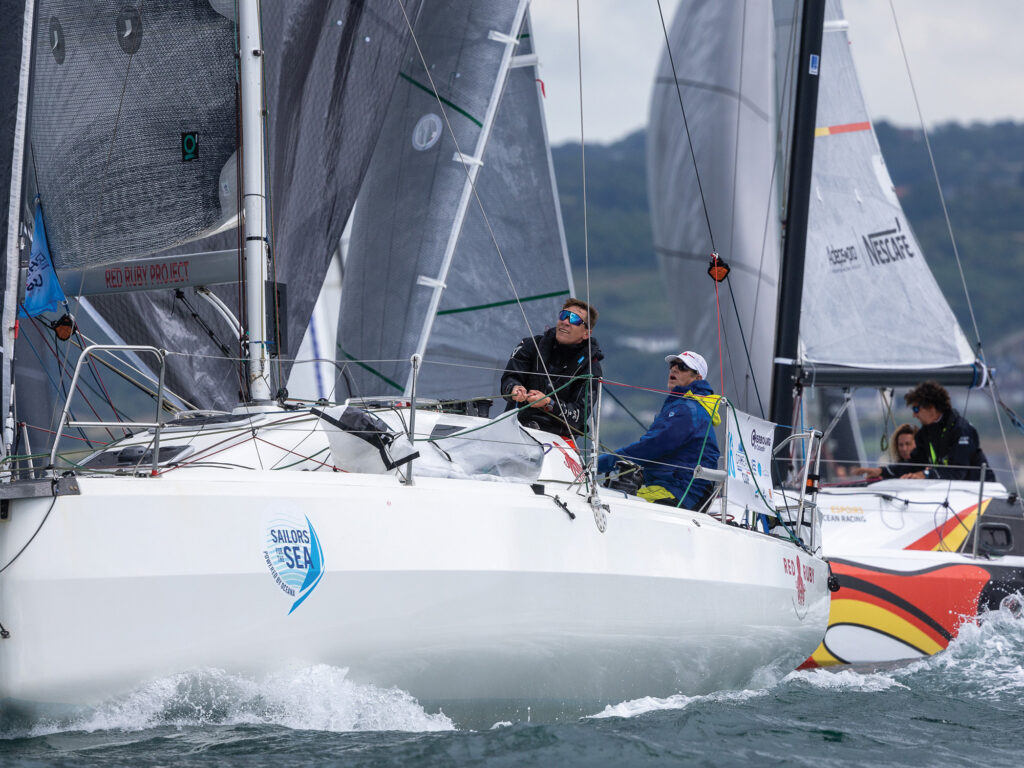
My last doublehanded race of the season was the Drheam Cup, a 600-mile adventure starting in Cherbourg, France, and finishing in Brittany. I asked rising British star Will Harris if he would sail with me on the Sunfast 3300 Red Ruby as co-skipper. To my surprise and delight, he agreed. For me, this was like Carlos Alcaraz agreeing to be my doubles tennis partner, a younger (than me) sailor at the top of his game.
After racing dinghies in his youth, Harris applied to the Artemis Offshore Academy in England, and spent two years learning to be a shorthanded offshore sailor. He then raced four seasons in the French Figaro circuit, the crucible of mostly younger offshore sailors. It is considered the most competitive shorthanded racing in the world, and nearly all of the top racers in that discipline have come through the Figaro. With one-design boats, there are no excuses. Everyone trains really hard, and 400-mile singlehanded races are often won by seconds, not hours. Figaro sailors learn to master all aspects of the game: preparation, navigation, boathandling, offshore tactics, energy management and boatspeed.
Harris’ success in the Figaro earned the attention of Boris Hermann, who asked him to join the Malizia IMOCA program in 2019. Harris began by helping to prepare the boat and help with training, but soon his talent and energy propelled him to a co-skipper role. In fact, Harris was the skipper of Malizia for the Southern Ocean leg of The Ocean Race in 2022, and co-skipper for the boat’s doublehanded races.
The 2024 Drheam Cup was the most competitive doublehanded offshore event of the season, and the final leg of the IRC Doublehanded Europeans. When we arrived in Cherbourg, Harris immediately began diving into the weather. He spent hours analyzing GRIB files and current charts in the two days before the race. He also had good thoughts on how best to prepare our boat for the race, so I got to work on that while he was working out our strategy.
We were meant to sail the Prologue (practice and promotional race) two days before the start, but there was no wind, so our first actual sailing together was an hour before the start of the Drheam Cup. I got a little too excited at the start and was over early, earning us a 1-hour penalty. Ouch. Harris was nonchalant about it though and just got on with the job of getting to the next mark as quickly as possible.
The first leg was a 90-degree reach to the corner of the Corentin Peninsula. We started with the jib, but when the breeze lifted a bit, we set the code zero and really took off. After the rounding mark, a 30-knot squall came through. We got the kite down just in time, and the leg across the English Channel turned into another windy jib reach. When I was steering, I would try to steer around the waves to maintain speed, but Harris suggested that I just go straight, with minimal variation from the course. This turned out to be much faster.
As we approached the turning mark at The Shambles, the wind lifted 10 degrees. Harris suggested that we try the code zero, even though the angle was a little marginal. We got it set up and hoisted, then unfurled to realize a 1-knot speed increase. Only a couple of our competitors set their zeros, so we stretched out another mile on most of the group.
By now the wind was blowing 20 knots, and it was completely dark. For the last hour of the leg, Harris focused on tracking into the mark as efficiently as possible, using course over ground to compensate for the current. He was also deep into working out our strategy for the next leg, a 200-mile beat up the English coast of Devon and Cornwall to Wolf Rock. The wind was forecast to clock right a little, so staying on port tack was the priority. However, Harris predicted a little tidal advantage offshore at Portland Bill, so we took a short tack after the mark to better position us for that.
It was not an easy night. The wind was gusty, and the waves were big and steep. There was limited visibility, so it was hard to keep the boat going fast. I really struggled to keep up to targets, but when Harris was steering, he managed to keep the speeds higher with a little more heel and a looser jib. In the wee hours of the morning, we finally got the expected right shift in Lyme Bay and tacked onto starboard. As dawn broke, it was clear that we had not had a great night. My inability to keep the boat going fast had cost us, and the top boats in our class were now close behind us. With 150 miles of tricky upwind sailing to Wolf Rock, there would be plenty of opportunities ahead.
Harris took a systematic approach to rounding headlands. Because there is typically a right shift when the headland is to starboard, you want to round close. But if you approach the headland too soon or get too far in, the wind will be lighter. So, picking the right place to engage the shore is critical. We used those principles to good effect at Start Point, getting a nice right shift to extend our lead a little. But Plymouth Bay was tricky. Offshore, the wind was steadier, but inshore, there were more shifts to play, plus the wind was expected to clock right eventually. So we stayed right, but not as close to shore as some boats.
As this was playing out, the wind started to die. We made the decision to change from the J2 to the J1. Since we were in the port headstay groove, we started the change on starboard tack, then tacked to port when the new jib was up. We had a little trouble with the feeder when dropping the J2, so we sailed on port a little longer than we intended, splitting from our little group. But as we finally lowered the sail, we noticed more wind ahead, so we carried on for another couple of minutes. When we tacked back to starboard, we were lifted and had more pressure than the boats to leeward. Over the next two hours, we extended our lead from 2.5 nautical miles to 3.
As we passed The Lizard, the open Atlantic Ocean lay ahead. There were 10 more miles to the turning mark at Wolf Rock. Night was falling as we played the shifts in the dying breeze. We could see lots of lights astern, but we managed to keep them there and rounded with a 2-mile lead in our class. The next mark was a virtual waypoint set 150 miles southwest in the open Atlantic. Harris had managed to download a fresh weather forecast just before we lost cell coverage at Wolf Rock.
The breeze was forecast to die and go left during the night and morning, then eventually build from the south. So instead of staying on the rhumb line, we set the code zero and reached 10 to 20 degrees below course, sailing fast toward the expected shift. As dawn broke, there was very little wind, but it was shifting south. As it slowly built, we were able to tack and take advantage of our southerly position. We could barely see the other leaders in our class, now 4 to 6 miles behind.
Day 3 was spent sailing upwind in medium air. When the wind shifted left, we would foot aggressively, maybe 10 degrees off full upwind. When the shift was right, we would come on the wind, or maybe take a short tack—all the while focusing on boat trim and rig setup to keep Red Ruby going as fast as possible. When we finally rounded the Drheam Waypoint at midnight, we had a 6-mile lead on the second-place boat.
Now only 140 miles to the finish, the forecast was not good. There was a ridge of high pressure blocking our path to the Brittany coast. Harris made a bold call to try to skirt the ridge to the north. This meant again sailing 10 to 20 degrees low of rhumb after rounding the waypoint. Initially this gave us fast code-zero reaching, but as dawn broke, the wind was indeed dying and lifting as forecast. We switched to the spinnaker, and there was just enough wind to keep it full. Now we could see some of our competitors coming up behind. This was going to be nerve-wracking.
By noon, it was still light but starting to shift right, which meant we had passed the axis of the ridge. The chasing boats had now closed to within 3 miles of us. But we benefited from getting the new wind first, jibed, and gradually stretched out as we approached Pen Marche on the Brittany coast, only 80 miles from the finish at La Trinite sur Mer.
Because there is typically a right shift when the headland is to starboard, you want to round close. But if you approach the headland too soon or get too far in, the wind will be lighter.
As the wind settled, there were three competitors clearly within range of us. The French J/99 Axesail had been following us all day. We owed them a little time, plus we had the 1-hour penalty from the OCS start. They got to within 3 miles of us as the wind died, but we had stretched it out to 6 miles.
The team on the Sunfast 3600 Bellino had taken a more direct route, and now continued to stay offshore, 7 miles astern. We rate nearly the same, but there was the penalty. And another 3600, Diablo, had also made gains but was still 10 miles astern with 60 miles to go. It was going to be all on for the final night and next morning.
By sunset, the wind had steadied to about 12 knots dead running. We could tell from the AIS that Axesail was essentially following us but making gains with its spinnaker pole against our sprit. We were holding off Bellino and Diablo, but they were offshore, so they could get different conditions as morning arrived. We had one more important decision to make: which side of Belle Ile to pass on the way to the last turning mark before entering Quiberon Bay and the finish.
Harris was thinking about passing inside, which would give us more routing freedom. But there could also be more wind offshore as morning arrived, a common occurrence in this part of the world. In the end, we chose inshore, and that turned out to be wrong. As the sun came up, our kite started to droop. Even worse, the current started to run against us. By now we could see Axesail about 4 miles back, but she was also light.
The offshore boats kept a little more wind and were gaining steadily. We were fighting the light breeze and adverse tide, trying to find pressure and escape from the current. By the final turn at Ile de Hoedic, the sea breeze was building, and it was a straightforward fetch for the final 8 miles to La Trinite. There were no more cards to play. We finished first in our doublehanded division, but Axesail came in 45 minutes later, and Bellino shortly after. So, both beat us, but we corrected a few minutes ahead of Diablo to take the final podium spot.
It was a bittersweet ending. We had worked hard and sailed really well. One big mistake at the start, a little off the pace on the first night, a little error at Belle Isle. But overall, we had sailed our boat fast and smart, using leverage and forecasting to position us to gain in changing conditions. On the other hand, it was a race we could have won, and knowing that hurt.
In the big picture, we sailed well enough to win the Doublehanded IRC Europeans (this race plus the previous Cowes to Dinard Race), which was my big goal for the year. In the really big picture, it was fantastic to sail with someone as skilled as Harris. I learned so much by watching him prepare and make decisions during this race, in addition to his boathandling and speed skills. Combined with his calm demeanor, he is really the consummate shorthanded sailor, and I felt really fortunate to have this opportunity to witness the skillsets of someone at the top of the game.
